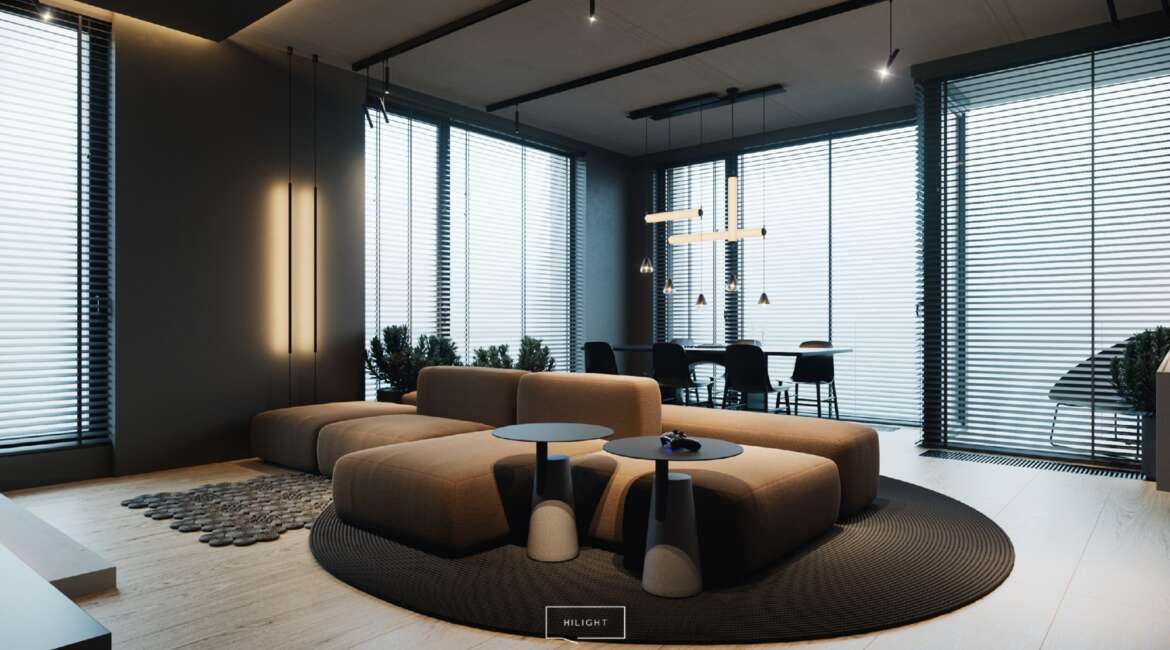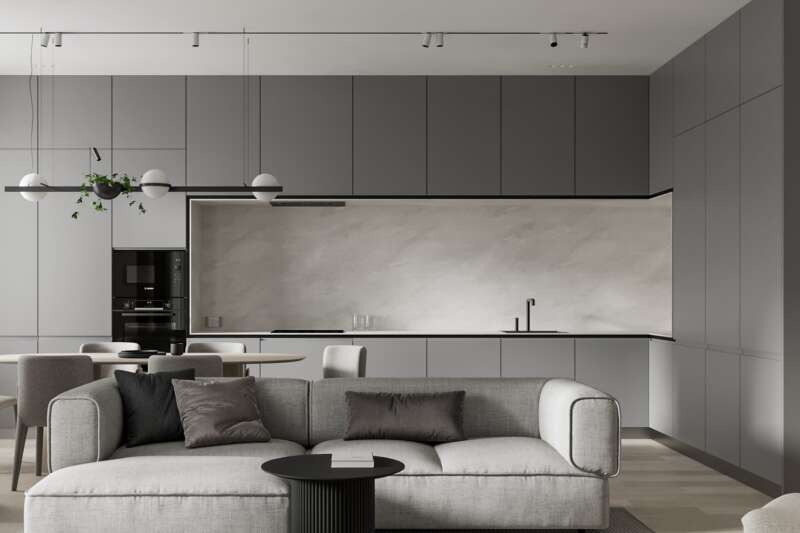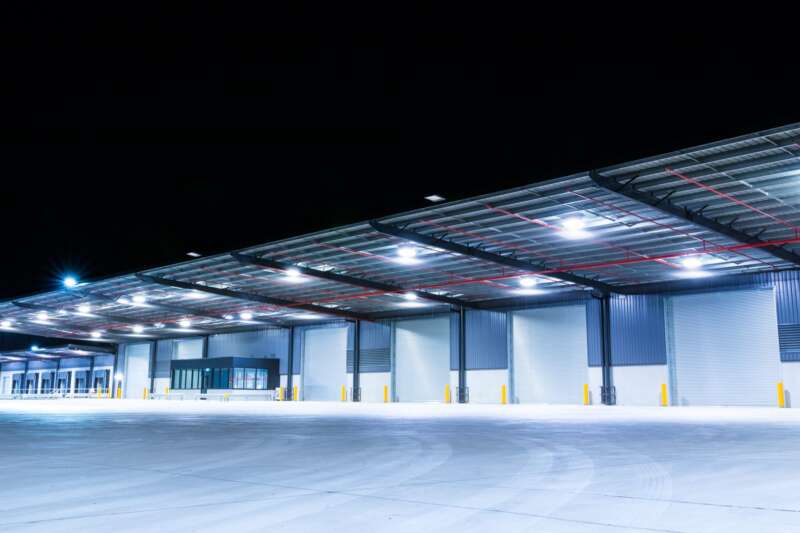Protect your lighting from failure
What is a Power Surge?
A power surge, or transient overvoltage, is a sudden increase in the voltage within an electrical circuit or system. During a surge, the power rises dramatically above its standard level and overloads the circuit. Voltage spikes can last for a few microseconds but reach hundreds of thousands of volts in the process. Power surges can happen due to various factors and can cause damage to electronic devices and appliances connected to the circuit. Most often when thinking of overvoltage, lightning strikes come to mind. However, up to 80% of power surges are caused by internal sources. The main causes of internal power surges are as follows:
Some appliances and electronic devices, when they turn on or off, can create localized power surges. This is more common with devices that have motors or compressors, like air conditioners or refrigerators. These internal surges can affect other devices on the same circuit.
When power is restored after an outage, it can sometimes come back with a surge. This is known as an “inrush current” and can happen when electrical devices draw more power as they start up.
Power grid fluctuations, such as sudden drops or spikes in voltage caused by grid switching, can induce power surges.
Poorly maintained or outdated wiring in your home or the electrical grid can lead to power surges. Loose connections, worn-out insulation, or overloaded circuits can all contribute to surges.
Circuit overloads are a common cause of power surges when an overwhelmed circuit experiences a sudden surge in current.
Difference Between Common Mode and Differential Mode
There are two main surge circulation modes: common mode and differential mode. Common mode surges occur between live conductors and earth/ground, such as line-to-earth or neutral-to-earth, and are often associated with lightning-induced fluctuations in earth voltage levels. Differential mode surges circulate between live conductors, such as line-to-line or line-to-neutral, and are typically caused by high-power machinery switching or heavy load-light load transitions. An effective surge protection system should address both common mode and differential mode surges to ensure effective protection for equipment and installations.
What is a Surge Protector?
Power surges can vary in intensity and duration, from minor voltage spikes that go unnoticed to severe surges that can cause significant damage to electrical devices and appliances. To protect against power surges, surge protection devices (SPDs) are commonly used. SPDs, previously known as transient voltage surge suppressors, are designed to divert excess voltage safely to protect connected equipment.
Different Devices Used in Surge Protection Devices
There are two main devices that surge protectors employ to divert an overvoltage to the ground or to absorb it:
Some surge protectors are designed with a component called a metal oxide varistor (MOV). These components are connected between the incoming electrical line and the ground. When a voltage spike occurs, the surge protector detects it and redirects the excess voltage to the ground, preventing it from reaching the connected devices.
The second device, known as a gas discharge arrestor (GDR), functions similarly to an MOV. At a specific voltage level, the gas within it is a weak conductor. However, when the voltage surpasses the standard threshold, the electrical power becomes strong enough to ionize the gas and turns it into an efficient conductor. The GRD directs the current to the ground line until the voltage returns to normal levels, at which point it reverts to being a weak conductor.
Surge protectors are also equipped with a clamping voltage rating, also known as voltage protection rating (VPR), typically expressed in volts. This rating indicates the voltage level at which the protector will start diverting excess voltage to the ground. For example, if a surge protector has a clamping voltage of 330V, it will start protecting devices when the voltage exceeds this level.
Surge protectors are rated based on their energy handling capacity, which is measured in joules. A higher joule rating indicates that the surge protector can handle larger and more frequent surges before becoming less effective.
The Five Types of Surge Protection Devices
The most effective surge protection for large lighting installations involves stacking multiple protective stages to keep the overvoltage from exceeding the standard level. There are 5 types of SPDs, with Types 1-3 being the most common.
Type 1 surge protectors are heavy-duty devices to protect against external surges, often caused by lightning or utility capacitor bank switching. These SPDs are installed on the line side of the service equipment.
Type 2 surge protection devices are placed at the load side of the overcurrent device to defend against residual lightning energy and other internally generated surge events.
Type 3 surge protection is integrated into equipment and is considered a point-of-utilization SPD.
Type 4 surge protection device, often considered a component SPD, provides wired-in protection. This type encompasses a broad range of protection devices and usually contains a combination of one or more Type 5 SPD components.
Type 5 SPD is a discrete component surge suppressor typically including an MOC. These can be installed on a printed circuit board, connected via leads, or housed within an enclosure with necessary mounting and wiring terminations.
How Do Power Surges Impact Lighting Fixtures?
A power surge causes lighting products to receive more electricity than they are designed to handle. Power surges can cause incandescent bulbs to burn out immediately due to the sudden spike in voltage. Fluorescent lighting fixtures with electronic ballasts are particularly susceptible to damage during power surges, as this can cause the ballasts to fail. Most LED lights have built-in, internal drivers that regulate the voltage supplied to the diodes. Power surges can damage these drivers and internal components, resulting in a reduced lifespan or failure of the LED fixture. Luckily, there are steps you can take and products you can buy that are designed to prevent damage from overvoltage.
One of the best ways to protect your lighting is to buy products with a built-in surge protector. There are a variety of residential and commercial LED lighting products that come available with internal protectors ranging from strip lights, drivers, parking lot lights, and emergency lights.
It is always recommended to connect your lighting, whether it has internal surge protection or not, to an external surge protector to prevent damage to the driver and internal components. Evaluate how much energy your surge protector can handle by looking at its joule rating. A higher joule rating means it can protect against a higher voltage surge. Finally, be sure to replace your surge protectors over time. If they take too many hits, then they may become less effective.








